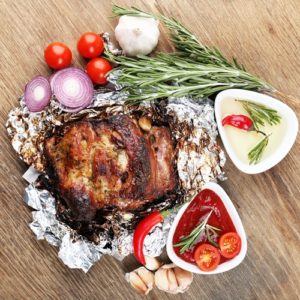Food halls have popped up across the U.S. over the past few years.These marketplaces became popular destinations by offering hungry patrons a variety of meal possibilities in convenient and inviting locations. Graduates from culinary school may benefit from learning more about how food halls operate and why the markets have grown in popularity. Indeed, food halls could present an opportunity to move your cooking career forward.
A growing trend
Food halls are not a new idea. As CNN discussed, centralized locations with numerous dining options have been common in many European countries for years. There are also some longstanding American markets, like Pike’s Place in Seattle and Grand Central Market in Los Angeles.
However, food halls have gained a great deal of ground in the U.S. of late, with the concept finding success on the coasts and quickly spreading. These new establishments emphasize artisan-crafted food and goods, either locally sourced or imported, and communal dining areas. The halls provide an appealing alternative from the chain restaurants that populate many American food courts and strip malls.
“Food halls emphasize artisan-crafted food and communal dining areas.”
Eater credited Mario Batali and Joe Bastianich with kicking off the current wave of food halls in 2010 by opening New York City’s Eataly. There, restaurants and artisanal vendors offer high-end products like pasta, olive oil, candy, coffee and makeup. The combination of premium goods and inviting spaces to sit and eat at lunchtime proved popular, and in 2013, a second location opened in Chicago.
However, Chicago was already home to the French Market, located near one of the city’s major hubs at Ogilvie Transportation Center, which opened in December 2009. Vendors serve items like Vietnamese pho, Kosher deli sandwiches and lobster macaroni and cheese. One of Chicago’s three Pastoral Artisan Cheese, Bread, & Wine locations provides customers with a convenient place to pick up gourmet items on their way home, as Specialty Food Magazine pointed out.
Another success story occurred at Krog Street Market in Atlanta, which opened in late 2014. According to Bon Appetit, the 30,000 square foot space has distinguished itself with restaurant stalls that serve cuisines not commonly associated with the Southern city. Some of the options include Szechuan dumplings, charcuterie and Japanese fusion.
Property manager Scott Shackelford commented on how Krog Street has altered perceptions of the local culinary scene.
“We’re breaking the mold that the only thing we eat down here is black-eyed peas and grits, because we don’t,” he said.
 Food halls specialize in artisan-made and locally sourced items.
Food halls specialize in artisan-made and locally sourced items.What’s ahead for food halls
Though food halls have become quite common in many states already, there are many more projects in the works. It seems that in coming years some markets will establish stronger individual identities. The Wall Street Journal predicted the major trends for 2016 will include the concept expanding into new territory and taking on unique and niche-oriented approaches.
For instance, chef Claus Meyer has planned a Nordic food hall and brasserie at New York’s Grand Central Terminal. The planned space includes a balcony cafe and coffee parlor. Meyer announced in a press release that Icelandic chef Gunnar Gislason will head the kitchen at the 100-seat brasserie. The restaurant is set to specialize in using ancient Scandinavian techniques of fermentation, pickling, salting and smoking to prepare mostly locally sourced ingredients.
Another of the most anticipated projects is Bourdain Market, the brainchild of chef, author and television host Anthony Bourdain. The New York Times explained that the market is planned for the Hudson River’s Pier 57, featuring about 100 vendors and at least one restaurant. Bourdain modeled his ideas off hawker markets in Southeast Asia, with foods available from around the world and communal eating spaces.
Speaking to the Times, Bourdain emphasized the breadth of culinary options he expects to have on hand when the market debuts, likely sometime in 2017.
“If you want some fine Spanish ham and a glass of cava, you can get that,” he said. “But there will also be China Straits noodles.”
Food halls are a major trend in American dining, but they are likely to be around for years to come. They appeal to customers by combining high-quality products, convenience and tremendous variety. Whatever your culinary specialty, a food hall may also offer a fantastic venue for you to show off and develop your own professional cooking skills.



